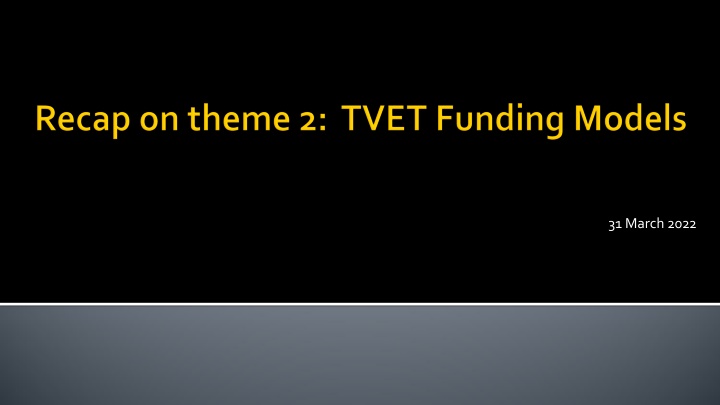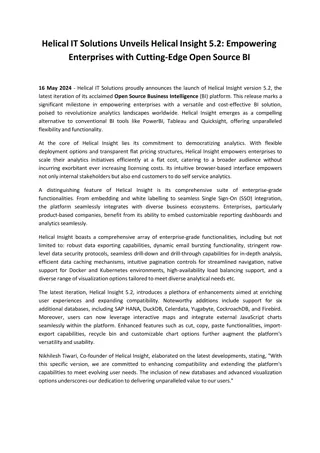Insight into Upcoming Events and Changes in the Modern World
Delve into the latest updates regarding upcoming events and changing trends in the contemporary landscape. Gain valuable insights and stay informed about the dynamic shifts shaping our world. Explore a diverse array of developments that promise to impact various aspects of society, technology, and more. Stay ahead of the curve with this comprehensive overview.
Download Presentation

Please find below an Image/Link to download the presentation.
The content on the website is provided AS IS for your information and personal use only. It may not be sold, licensed, or shared on other websites without obtaining consent from the author.If you encounter any issues during the download, it is possible that the publisher has removed the file from their server.
You are allowed to download the files provided on this website for personal or commercial use, subject to the condition that they are used lawfully. All files are the property of their respective owners.
The content on the website is provided AS IS for your information and personal use only. It may not be sold, licensed, or shared on other websites without obtaining consent from the author.
E N D
Presentation Transcript
The National Training Fund (NTF) is mandated under Section 35 to collect vet levy contributions from all employers with a payroll of a million N$ and above. There are some difficulties in complying with the legal requirements, and the Act excluded some functions. Regardless, alot has been achieved in terms of skills funding and capacity building. On top of that, there are plans for improvement on the existing challenges. Funding is key in delivering effective, efficient, competitive and flexible TVET education.
Botswana, South Africa and Zimbabwe employ a number of funding models; however, public funding and the levy-grant system are the most common. Other sources of funding include corporate and donor funding, income generating activities at institutional level, fees from students through self- sponsorship, students bursaries, and student grant-loan schemes. As a result of COVID, countries have struggled to collect levies and levy collection has thus declined. The transition to online teaching in TVET requires additional funds and support.
Wastage has been noted in education as a result of the mismatch between skills and industry demands. There are variations in TVET Levy-based training funds collected within SADC. However, apart from how many funds are available, there is a need to define how the fund is going to be managed and allocated. There is a concern about transparency when the country runs the fund, especially when there is no engagement with social partners.
There is a need to rethink the type of activities that are funded through TVET funding. To avoid wastage, sectorial committees and boards providing oversight should be put in place. Audits of TVET institutions are necessary in ensuring quality; they are a quality assurance tool. It is important to ensure equitable access to funding between private and public TVET institutions.
Research is needed to establish the extent to which TVET training institution funds are used for intended purpose. Robust policies should be drafted to close loopholes regarding the use of funds for intended purpose. There is need for serious engagement to allow collaborative funding models that are sustainable.
Although the impact of the 4IR is on cognitive and physical labour, the main concern is that to date some TVET systems are still in 2IIR or 3IR. The focus of TVET needs to shift to higher cognitive, social and emotional and technological skills and most importantly, the integration of technological skills into all learning areas. As part of their training, TVET students must go for industrial attachment; however, due to a number of factors, most students do not get industrial attachments.
TVET institutions need a paradigm shift from the traditional practice of industrial attachment. Simulated Work-Based Learning can be used as an alternative to work-based learning. It is therefore crucial to train TVET teachers on Simulated Work Based Learning in order for them to use it in their teaching.
Paying scarce skills/retention allowances is recommended as a means of attracting and retaining competent and qualified TVET teachers. Countries are finding it unsustainable to fully depend on public budget funding. Sectoral funding is sustainable as it considers jobs skills in view of the demand on the labour market. To avoid wastage of funding resources, labour market surveys are important and must be considered for sectoral funding allocations.
TVET has an important role to play in the green economy. Greening TVET requires extensive organizational development (OD) and human resources development (HRD). TVET institutions have to become green and try to reduce the carbon footprint of their campuses.
TVET training and TVET processes need to digitalise and digitise in view of the 4IR. TVET training institutions should divert investment from physical infrastructure towards technological infrastructure. We cannot separate the environment and the economy as the environment ensures supply of the equipment used in TVET training. To reduce the cost of technology in TVET, partnerships between service providers and TVET institutions are important, and there are different partnership models.
Technology should be considered a public policy issue; through this, the pace of technology can be controlled. Policy makers, industrial experts and TVET institutions should collaborate to ensure that TVET training offers relevant skills that can use stimulated tools. National governments and TVET institutions should collaborate on policy formulation. The TVET sector needs a digital transformation strategy.
There is continuing lack of women in leadership positions not only in STEM but even in the health and education sectors. There are ongoing AU initiatives that benefits women. Research evidence and robust data are needed for effective policy engineering for TVETisinggirls into male-dominated disciplines.
Gender stereotyping in the training environment, lack of career awareness and information, gender-friendliness of infrastructure and labour market organisation are key factors preventing women and girls from pursuing careers and training opportunities in stem. The role of the inclusion of women and girls in STEM-TVET in alleviating poverty, increasing social cohesion, increasing political stability and enhancing use of human capacity is being recognised. To ensure appropriate intervention application, there is a need for reliable data for the monitoring of the state of gender and social inclusion in TVET in Africa through regular reporting by the TVET institutions.
To ensure gender and social inclusion in TVET in Africa, all TVETs should establish more WITED Chapters and African countries should put WITED National Chapters in place. There is a need to create gender-sensitive environments and advocacy for the inclusion of women in TVET. There is a need to develop AgriTVET and in particular, promote institutional gender competence.
The misconception of men-dominance is a challenge facing TVET in Tanzania. Following efforts by TET institutions to include women in their programmes, an increase in enrolments by both males and females was recorded. To Increase women enrolment in TVET in technical institutions the following nine strategies were employed and proved to be effective. Technical institutions and other stakeholders should continue using the nine effective strategies.
Train teachers to appreciate and promote inclusion of women in TVET. Women must fight stereotypes both from the family members and society in order to succeed in TVET; they must follow their passions It is important to provide opportunities for girls and young women in male-dominated areas in the job market; they become role models to other women and girls.
Despite the stereotypes, situations are changing as women are being accepted. Educate young girls to note that creativity has not gendered boundaries. Empower women and communities not to marry off their young girls cultures can be deconstructed to empower women. Enrol more girls in TVET institutions, and practise affirmative action for young girls in TVET. Advocacy sensitise both girls and boys about their roles in TVET programmes.























